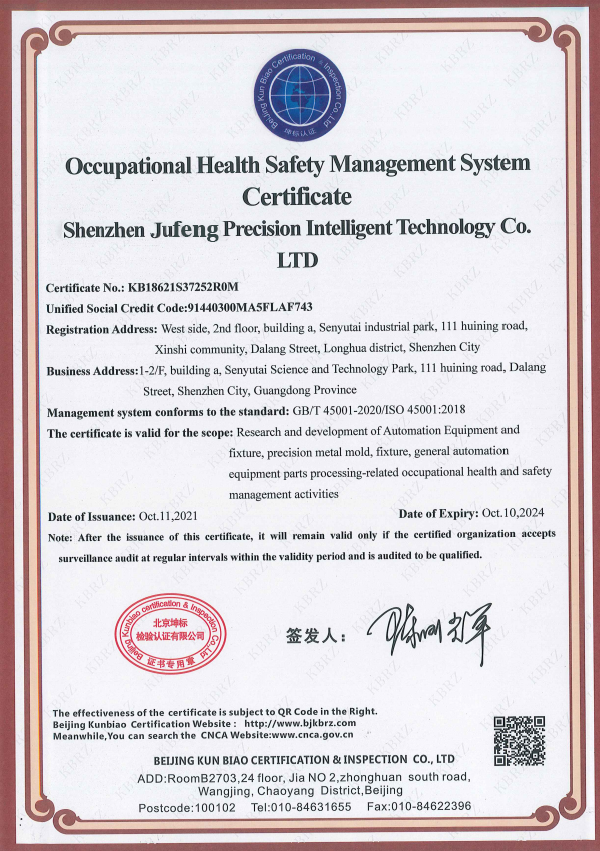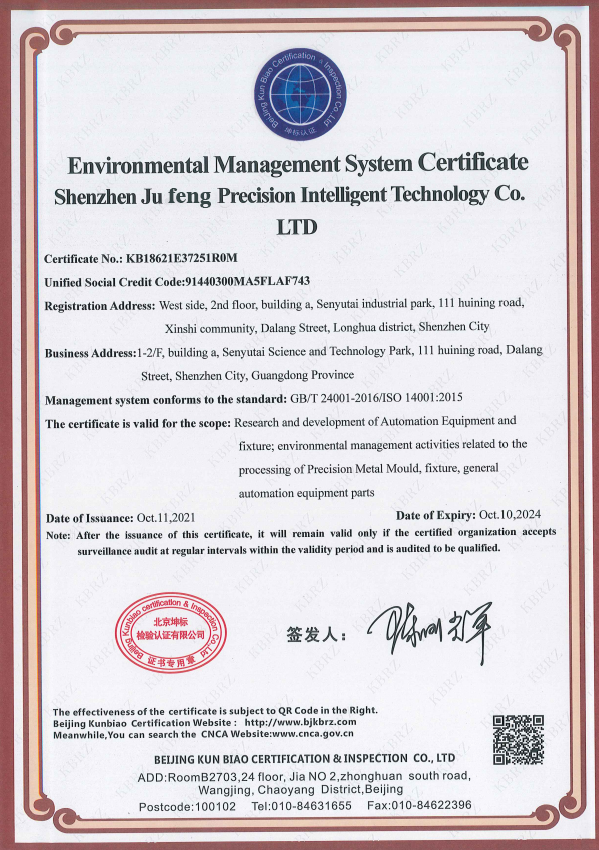News
The Impact of CNC Jigs on Reducing Machining Errors: Enhancing Precision in Industrial Manufacturing
The Impact of CNC Jigs on Reducing Machining Errors
In the realm of industrial manufacturing, precision and efficiency are paramount. As industries strive to produce components with tighter tolerances and higher quality, the importance of reliable tools and methodologies cannot be overstated. One such advancement is the use of **CNC jigs**, which play a critical role in minimizing machining errors. In this article, we will delve into the various ways CNC jigs are utilized to enhance machining processes while significantly reducing inaccuracies.
Table of Contents
- Introduction to CNC Jigs
- What are CNC Jigs?
- Benefits of Using CNC Jigs in Manufacturing
- Types of CNC Jigs and Their Applications
- How CNC Jigs Reduce Machining Errors
- Best Practices for Effective Use of CNC Jigs
- Future Trends in CNC Jig Technology
- Frequently Asked Questions
- Conclusion
Introduction to CNC Jigs
CNC jigs are specialized tools that assist in the machining process by holding workpieces in place, guiding cutting tools, and ensuring consistent measurements. These tools are essential in reducing the likelihood of errors during the machining phase, which can lead to costly rework and wasted materials. By employing CNC jigs, manufacturers can achieve higher levels of accuracy and repeatability, ultimately enhancing overall productivity.
What are CNC Jigs?
CNC jigs can be defined as devices that secure a workpiece during machining operations. They are designed to optimize the manufacturing process by providing precise positioning and support for tools. Unlike traditional jigs, CNC jigs offer automated features that enhance their functionality, allowing for complex machining tasks to be executed with ease.
Key components of CNC jigs include:
- **Base Plate**: The foundation that supports the entire jig assembly.
- **Locators**: Components that ensure the workpiece is positioned accurately.
- **Clamping Mechanisms**: Devices that securely hold the workpiece in place during machining.
- **Guide Features**: Elements that help direct cutting tools along desired paths.
These components work together to provide a stable environment for machining operations, significantly reducing the likelihood of human error and improving operational efficiency.
Benefits of Using CNC Jigs in Manufacturing
The integration of CNC jigs into manufacturing processes brings numerous benefits:
1. Enhanced Accuracy
CNC jigs ensure that workpieces are positioned with remarkable precision, minimizing the risk of machining errors. This accuracy is crucial for industries that demand tight tolerances, such as aerospace and automotive manufacturing.
2. Increased Efficiency
By automating the setup process, CNC jigs reduce the time needed for adjustments and repositioning. This efficiency allows manufacturers to increase throughput and meet tight production schedules.
3. Reduced Material Waste
With improved accuracy comes less waste. CNC jigs help in reducing scrap rates by ensuring that components are machined correctly the first time, leading to savings in material costs.
4. Consistent Quality
The repeatability of CNC jigs maintains a consistent level of quality across multiple production runs. This consistency is essential for maintaining customer satisfaction and meeting regulatory standards.
5. Flexibility in Production
CNC jigs can be easily adjusted or modified for different machining tasks, allowing manufacturers to be more responsive to changes in demand or product specifications.
Types of CNC Jigs and Their Applications
There are several types of CNC jigs tailored for specific applications:
1. Drill Jigs
Used primarily for drilling operations, these jigs guide drill bits to ensure accurate hole placement and depth.
2. Assembly Jigs
These jigs assist in the assembly of components, providing a stable platform for aligning and securing parts together.
3. Welding Jigs
Welding jigs hold components in position during the welding process, ensuring proper alignment and minimizing distortion.
4. Inspection Jigs
These jigs are used for quality control, allowing for precise measurement and verification of component dimensions against specified standards.
5. Fixture Jigs
Fixture jigs are versatile tools that secure workpieces during various machining operations, including milling, turning, and grinding.
Each type of CNC jig serves a unique purpose and can be customized to meet the specific needs of a manufacturing process.
How CNC Jigs Reduce Machining Errors
The effectiveness of CNC jigs in reducing machining errors can be attributed to several factors:
1. Precision Positioning
CNC jigs feature advanced positioning systems that ensure workpieces are placed accurately, eliminating misalignments that can lead to errors.
2. Tool Guidance
By providing clear pathways for cutting tools, CNC jigs minimize the chances of tool drift or deviation, resulting in cleaner cuts and precise dimensions.
3. Stability and Support
The robust construction of CNC jigs ensures that workpieces remain stable during machining, reducing vibrations and movement that could compromise quality.
4. Automation and Consistency
Automated features in CNC jigs allow for repeatable setups that maintain consistent performance across multiple machining cycles, reducing the variability associated with manual setups.
5. Error Detection
Modern CNC jigs often come equipped with sensors that monitor the machining process in real-time, alerting operators to potential errors and allowing for immediate corrective actions.
By integrating these features, CNC jigs serve as a powerful ally in the quest for precision in manufacturing.
Best Practices for Effective Use of CNC Jigs
To maximize the benefits of CNC jigs, it's essential to adopt best practices throughout the manufacturing process:
1. Proper Design and Engineering
Invest time in designing jigs that are specifically tailored to the unique requirements of your machining processes. This includes considering factors such as material types, tolerances, and production volumes.
2. Regular Maintenance
Routine inspections and maintenance of CNC jigs ensure that they remain in optimal working condition. Address wear and tear promptly to avoid compromising accuracy.
3. Employee Training
Equip your workforce with the necessary skills to operate CNC jigs effectively. Training should include both technical aspects and best practices for setup and troubleshooting.
4. Continuous Improvement
Encourage feedback from operators and engineers on the performance of CNC jigs. Use this information to make iterative improvements to jig designs and machining processes.
5. Incorporate Technology
Leverage advanced technologies such as computer-aided design (CAD) and computer-aided manufacturing (CAM) to enhance the design and functionality of CNC jigs.
Implementing these practices will ensure that your CNC jigs operate at peak performance, contributing to the overall quality and efficiency of your manufacturing processes.
Future Trends in CNC Jig Technology
As the manufacturing landscape evolves, so too will CNC jig technology. Several trends are emerging that promise to enhance the capabilities of these essential tools:
1. Smart Jigs
The integration of IoT technology into CNC jigs will enable real-time monitoring and data collection, allowing for predictive maintenance and enhanced performance analytics.
2. Additive Manufacturing
The rise of 3D printing offers new possibilities for creating complex jig designs that were previously unattainable, leading to increased customization and flexibility.
3. Advanced Materials
The development of lighter and more durable materials will enhance the performance of CNC jigs, making them more efficient and easier to handle.
4. Enhanced Automation
The future of CNC jigs lies in greater automation, with robotic systems taking on more complex tasks to further streamline the machining process.
5. Eco-Friendly Practices
With a growing focus on sustainability, manufacturers are exploring ways to create CNC jigs that minimize waste and energy consumption while maintaining performance.
These trends indicate a bright future for CNC jigs, positioning them as indispensable tools in modern manufacturing.
Frequently Asked Questions
1. What is the primary function of CNC jigs?
CNC jigs primarily serve to hold and position workpieces during machining processes, ensuring accuracy and repeatability.
2. How do CNC jigs differ from traditional jigs?
CNC jigs incorporate automated features and advanced technology that enhance precision and efficiency, whereas traditional jigs may rely more on manual adjustments.
3. Can CNC jigs be customized for specific applications?
Yes, CNC jigs can be designed and customized to meet the unique requirements of various machining operations.
4. What materials are commonly used for CNC jigs?
CNC jigs are typically made from materials such as aluminum, steel, and high-strength plastics, depending on their intended application and required durability.
5. How can manufacturers ensure the effectiveness of CNC jigs?
By following best practices in design, maintenance, and employee training, manufacturers can maximize the benefits of CNC jigs and ensure effective performance.
Conclusion
The impact of CNC jigs on reducing machining errors cannot be overstated. By enhancing accuracy, increasing efficiency, and providing a stable environment for machining operations, CNC jigs play a vital role in modern manufacturing. As industries continue to evolve, the integration of technology and innovative practices will ensure that CNC jigs remain a cornerstone of precision engineering. Embracing these advancements will not only improve production outcomes but also position manufacturers for success in an increasingly competitive landscape.




